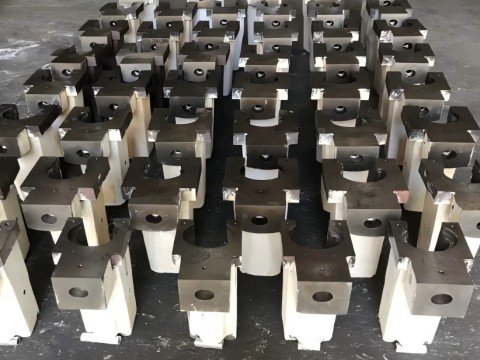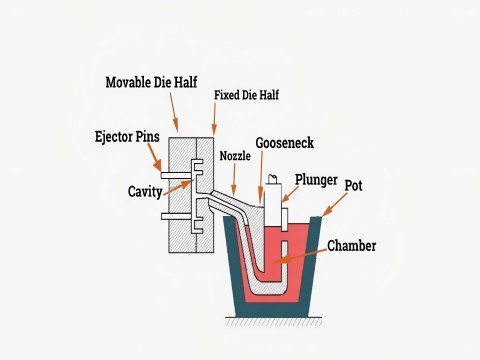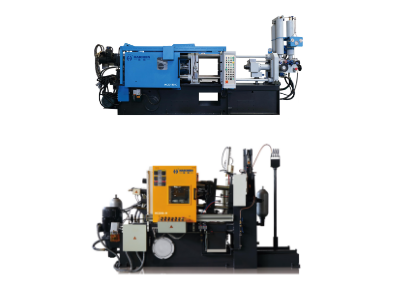In the die casting process, the design of the gooseneck structure is a key component of Hot-Chamber Die Casting.
The gooseneck is a kind of metal channel connecting the molten metal pool and mold chamber. Its design directly affects the efficiency of metal flow, casting quality and equipment life.

Gooseneck structure design in die casting

The gooseneck structure is a critical component in hot-chamber die casting, especially for low-melting-point alloys like zinc and magnesium. Here are some key points regarding its design:
Material Selection
Forged vs. Cast Steel: Goosenecks can be made from either forged or cast hot forming steel. Forged goosenecks have higher material homogeneity, while cast goosenecks are less prone to stress cracks due to their even wall thickness transitions.
Structural Design
Smooth Flow Path: The gooseneck should ensure that molten metal can flow smoothly into the mold cavity without turbulence or hesitation.
Curvature and Dimensions: The curvature of the can avoid local stress concentration. The width and eccentricity of the gooseneck are key parameters affecting its strength. For example, the initial design of the gooseneck width might be 50 mm, with an eccentricity of (t/2 + 2.5) mm, where t is the width dimension of the mold section farthest from the center of pressure.
Strength and Durability
Stress Analysis: The gooseneck portion of the mold must withstand significant pressure and bending moments. Strength analysis is essential to ensure that the gooseneck can handle the forces involved in the casting process.
Wear Resistance: Since the gooseneck is in direct contact with molten metal, it is subject to wear. It is designed as a replaceable wear part, especially for zinc and magnesium casting.
Integration with the Die Casting Machine
Connection to the Mold: The gooseneck is connected to the fixed half of the mold, allowing molten metal to flow from the injection system into the mold cavity.
Clamping and Alignment: Proper clamping and alignment of the mold halves are crucial to prevent metal leakage and ensure consistent casting quality.
Optimization for Efficiency
Cycle Time Reduction: The design of the gooseneck should minimize the time required for the molten metal to fill the mold cavity, thereby reducing cycle times.
Cost Considerations: While ensuring strength and functionality, the design should also aim to reduce manufacturing costs. For example, optimizing the width of the gooseneck can help balance strength and cost.
Die casting machines supplier: Haichen Machinery
Haichen Machinery is a Chinese company specializing in the manufacturing and supply of aluminum cold chamber die casting machines, hot chamber die casting machines and related equipment.

Besides die casting machines, we also supply spear parts, such as nozzles, crucible, gooseneck, ladler spoon, and so on.

The design of the gooseneck structure in die casting involves careful consideration of material properties, structural integrity, and process efficiency to ensure high-quality castings and long service life of the gooseneck component.



